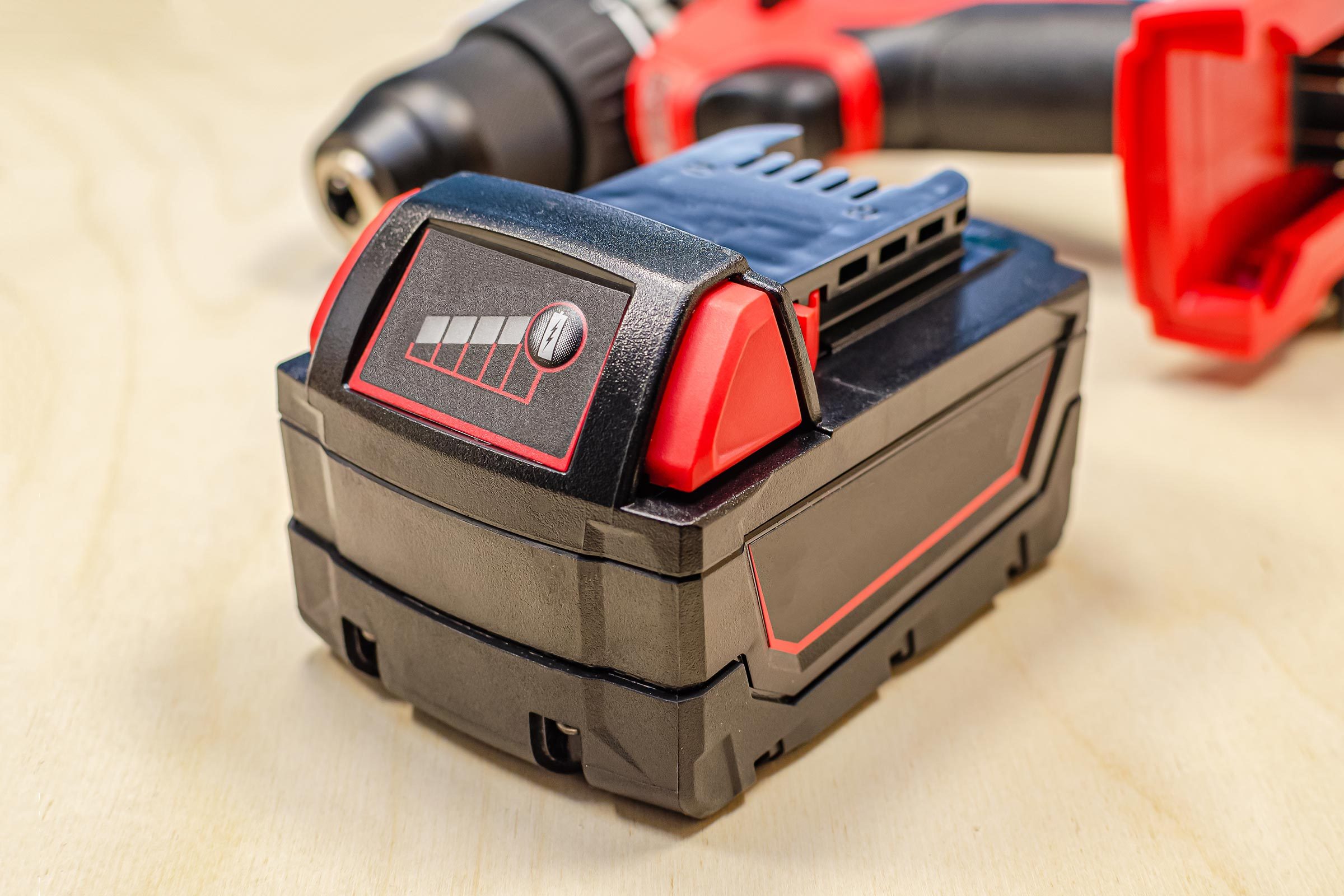You bought a cordless tool system years ago, but now you have your eye on a tool from a different brand. Go for it. Here's why.

Why You Should Own More Than One Battery System for Tools

For years, I mainly did the most simple of DIY tasks around my Indiana home — tightening hinge screws on cabinet doors, repairing floor trim or hanging a floating shelf. A basic set of Black+Decker cordless tools — a drill/driver, plus reciprocating and circular saws — served me well.
As I slowly became more serious about woodworking and home improvement tasks, I bought more cordless tools, staying within that Black+Decker family to avoid investing in another battery system. At times, my garage featured more black and orange than a middle-aged Harley-Davidson owner.
But recently, circumstances forced me to add a second battery system, and I’m starting to kick myself for not doing it sooner. I’d argue most DIYers would benefit from investing in at least two 18V/20V tool lineups. Here’s why.
On This Page
Starting Your Battery-Powered Tool Collection
If you haven’t begun buying cordless power tools, consider these questions: How much are you willing to pay? How often do you plan to use the tools? What projects are you likely to tackle? And what tools do you need now versus what you might need in the future?
Unless you’re a professional, you don’t necessarily need to invest in the more powerful tool systems from brands like Rigid, DeWalt or Milwaukee.
Occasional weekend woodworkers will likely be more than happy with Craftsman or Porter Cable combos. You can pay $150 for this four-pack of Black+Decker tools, whereas a similar set from Makita, Rigid or DeWalt will set you back double or triple that.
But if you use your tools every day, or expect to, spend the extra money now. You’ll appreciate the increased power and better ergonomics in the long run. Check out each brand for the tools that you need. Fixing up an old Mustang in your driveway? An impact ratchet might be in your future. Does your preferred tool system offer one?
One more thing to consider: Where you typically buy your tools?
Harbor Freight exclusively sells Bauer and Hercules 20V tool systems. Menards, The Home Depot and Lowe’s only sell certain 20V tool systems. If you decide to invest in a Craftsman 20V system, keep in mind The Home Depot doesn’t carry it. Likewise, you won’t find Makita 20V tools at Lowe’s.
When To Add a Second Battery-Powered Tool System
I have no complaints about the quality of Black+Decker tools relative to their price. I’ve used them for years with no issues, except one — they don’t offer all the tools I need.
Earlier this year, I bought a new 20V system. The collet on my ancient corded DeWalt router broke, and the company no longer makes replacement parts for it. I couldn’t even find one on eBay! I knew I wanted a cordless replacement. And because Black+Decker doesn’t offer one, I knew I had to invest in a second battery system.
My first choice was Ryobi, given the ubiquitousness of the company’s tool lineup, from nail guns to pipe cutters to a paint sprayer. But when I went to my local home improvement store, I didn’t like the way the Ryobi router felt in my hand. Given how often I use a router in my woodworking, it was immediately a no-go.
After some online research, then handling the different options in person, I chose a new DeWalt router. I also picked up a DeWalt 20V drill/driver set that came with two batteries, as well as a 20V oscillating multitool.
I immediately noticed the difference in power between my old drill and new DeWalt. I definitely see myself buying more DeWalt tools in the near future.
How Does Having a Second Battery System Save Money?
Having two battery systems might sound like it would be more expensive. But in the long run, you’re not only getting a more wide-ranging tool lineup, you’ll eventually save a bundle because you don’t need the top-level version of every tool.
Need to replace drywall? You can buy DeWalt’s rotary cut-out tool for $199 or Ryobi’s version for $60. If you only work with drywall once in a blue moon, why spend more than three times the amount?
Likewise, if you only grab a deep-cut bandsaw a handful of times, would you rather spend more than $400 on Milwaukee’s 18V tool or less than $150 on the Ryobi one? The Ryobi probably lacks the Milwaukee’s power, but that’s a sacrifice most DIYers would make to save a few bucks.
I can’t go back in time and convince myself not to buy my first Black+Decker 20V tools. But I’m not going to sell or give away my old equipment just because I added some black-and-yellow tools to my collection, at least not until those Black+Decker batteries eventually die. Heck, I’ll probably add a third battery type to the mix whenever an upcoming project demands a Ryobi tool.




















